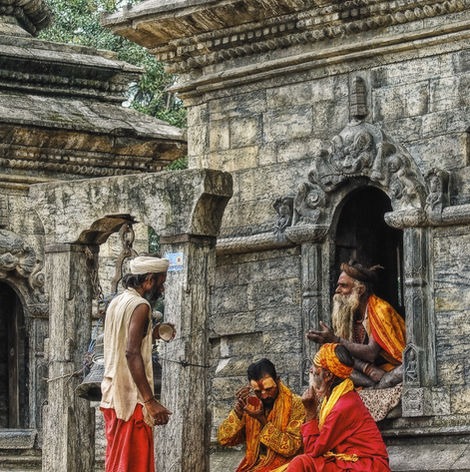
Better Believer
Hinduism

General Background
The term "Hindu" was originally a word coined by the Greeks to refer to the people living beyond the Indus River. It did not at the time have any religious affiliation, and today it refers to a wide variety of religious traditions. The exact origins of Hinduism are unclear, but archaeological evidence gives some suggestions.
Some of the ancestors of today's Iranians and Indians were known as the Aryans. The Rig Veda, the earliest religious text of Hinduism, indicates that the Aryans split into several tribes. The group who settled in the valley of the Indus River were called the Dravidians, and within that group the people who settled in Hindustan were the Hindus.
They were largely a nomadic people who worshiped many nature-related gods. As they traveled, they brought with them a social structure that became India's caste system: Brahmins (priests), Kshatriyas (nobles and warriors), Vaishyas (commoners and merchants), and Sudras (slaves). Today, there is an additional caste of rejected people.
By the last half of the first millennium BCE, the interactions between Aryan and Dravidian thought began to form what is understood as Hinduism today. There is a trinity of gods known as the Triumurti, a threefold manifestation of the ultimate reality called Brahman-Atman. The three major gods are Brahma (the creator), Shiva (a duality of destruction and healing), and Vishnu (the preserver). There are many manifestations of these three gods and other additional minor gods.
Modern Understandings
Hinduism does not have denominations in the way that a western person may think of them. Hindus may tailor their individual journeys along the teachings of several different gurus or texts without exclusion. There are a diverse range of adherents that may focus on a single deity or multiples or shift over time.
Some core ideas in common are that the universe is permeated with the Divine, which can be known in many names and forms and is deeply present within the human soul, and that the soul's journey to full self-realization takes many lifetimes.
It can be understand that there are three primary ways to attain self-realization: Karma, the way of works; jyana, the way of knowledge, and bhakti, the way of worship.
Hindu scriptures also vary. Some scholars classify them into two groups: the Shruti and the Smriti. The Shruti consist of the four Vedas (books of knowledge), the Brahmanas, the Aranyakas, and the Upanishads, and are considered a fixed canon. The Smriti corpus contains all other scriptures including the myths and legends of the Puranas, the stories of the Mahabharata and the Ramayana and law codes.
How do current believers worship?
There are many variations of Hindu rituals at home, but most families will have an altar in their houses. This can be a place of scripture study, performing prayers, and gathering as a community to celebrate holidays or special events.
Communities may also build a temple where they can worship. Inside these temples are Murti, or images of God that have been ritually dedicated to the purpose.
Worshiping, either in the temple or at a home alter, involves a sequence of offerings to the Divine. The general term is puja. The offerings represent the five elements of the universe: earth, water, space, wind, and fire. These gifts are returned as blessings to those who have come to worship.



